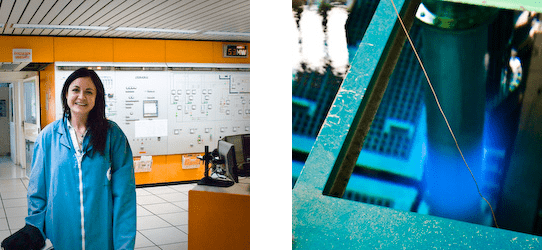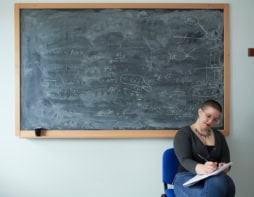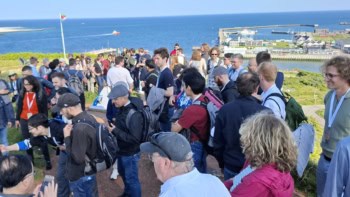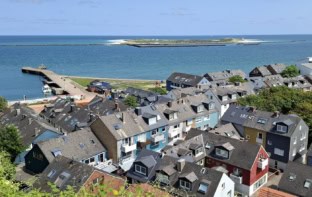By Louise Mayor, Grenoble

(Left) Suited and booted and (right) Cherenkov radiation from an old reactor core
When I awoke last Thursday morning I didn’t expect that by the end of the day I’d have seen a nuclear reactor. And I don’t just mean looking at a big concrete building from the outside – I saw stuff glowing and had to wear a funny-looking suit and booties.
I was visiting the Institut Laue-Langevin (ILL) in Grenoble, France, where atoms are split not to generate electricity but to use the neutrons in experiments. In fact, that’s the whole purpose of the ILL reactor, known as a “neutron source”.
But why neutrons? Being electrically neutral, neutrons can penetrate deep into matter, right to the nuclei of atoms. Charged particles, in contrast, get scattered by atomic electrons. Neutrons can be thought of as a particle or wave, and with a wavelength on the order of Angstroms like those produced at the ILL, they interact with crystal structures to form a diffraction pattern as described by Bragg’s law. This pattern can be used to find out the positions of atoms in a sample, as well as how they move.
One application of neutron scattering I heard about was to look inside a turbine blade that’s been subjected to a projectile frozen chicken – the experimental version of a real-life, unlucky stray pigeon or seagull. Neutrons have been used to probe inside the turbine blade without having to interfere with it further by cutting it apart.

(Left) Neutron goings-on and (right) leaving via the air lock
Upon leaving the reactor hall I went back out through an air lock; there is a lower pressure inside the building so that if there is some leak, gas goes in and not out. Not quite the end of it, I then had to put my hands in a hole each and watch a progress bar slowly fill the screen ahead before I got the reassuring confirmation: “NOT CONTAMINATED”.
Another way to generate neutrons is “spallation”, where protons are accelerated towards a heavy metal target and knock neutrons off atomic nuclei. This method will be used in the European Spallation Source (ESS), which Sweden and Denmark won the bid last year to co-host in Lund, Sweden. To find out more, you can watch this video where the ESS is introduced by none other than Sir Patrick Stewart.



